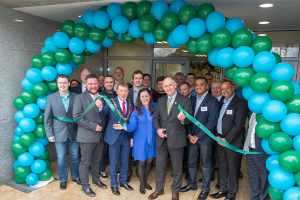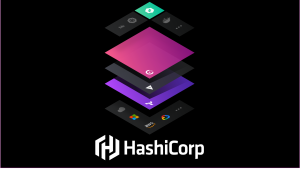Size doesn’t matter for these data visualization experts | #data14 CrowdChat
![]() Wikibon‘s Big Data Analyst Jeff Kelly recently hosted a preview CrowdChat ahead of the Tableau Conference 2014 (#data14) that is taking place this week, September 8-12, at the Washington State Convention Center in Seattle, WA. For the past seven years, the Tableau Conference, hosted by Tableau Software Inc., has been the gathering place for data enthusiasts to discover how to leverage their investment in data analytics, hear what’s next in business intelligence (BI), and to network with other like-minded individuals.
Wikibon‘s Big Data Analyst Jeff Kelly recently hosted a preview CrowdChat ahead of the Tableau Conference 2014 (#data14) that is taking place this week, September 8-12, at the Washington State Convention Center in Seattle, WA. For the past seven years, the Tableau Conference, hosted by Tableau Software Inc., has been the gathering place for data enthusiasts to discover how to leverage their investment in data analytics, hear what’s next in business intelligence (BI), and to network with other like-minded individuals.
A keynote speech on Wednesday morning by Neil deGrasse Tyson, American astrophysicist and host of the TV series “Cosmos: A Spacetime Odyssey,” is among the five much-anticipated keynote speeches at this year’s #data14 conference.
The following are some relevant topics discussed during the #data14 CrowdChat that #data14 conference attendees will learn more about at the sold-out show. Along with Kelly, CrowdChat participants included John Furrier, founder of SiliconANGLE; Alan Morrison, Senior Research Fellow at PricewaterhouseCoopers, LLP; Susan Baier, founder of research company Audience Audit; and Austin Dahl, a Software Developer and Manager at Tableau Software.
.
Data visualization in data storytelling: Size doesn’t matter
.
The CrowdChat kicked off with an exchange about how Big Data and data visualization get mentioned in the same breath a lot, but differences in how the relationship between the two is viewed are significant. “From my persp (sic), data viz is critical in ‘data storytelling’, making sense of large volumes of messy data,” Kelly wrote during the CrowdChat. “As the sources of data expand and the inter-relationships of data sources grows more complex, the more important data viz becomes.”
“Visual storytelling isn’t easy, but it is rewarding,” acknowledged Alan Morrison, Senior Research Fellow at PricewaterhouseCoopers, LLP.
Big Data really needs data visualization to be helpful because there’s just so much to look at that it’s easy to get lost, noted Susan Baier, founder of research company Audience Audit. “But data viz definitely doesn’t require Big Data,” she wrote. “There are lots of other kinds of data that really benefit.”
Visualizing smaller data sets can be just as compelling, Kelly agreed. “The value is in the insights, not necessarily the volume or type of data,” he wrote. “But, as the sources of data expand and the inter-relationships of data sources grows more complex, the more important data viz becomes.”
.
The democratization of data and self-service BI
.
The industry talks a lot about the democratization of data and “self-service” business intelligence but, as Kelly wondered, why is it so important to make data visualization capabilities accessible to “regular” business people? “Because abstracting away the complexity of the data science is key to make data wrangling and discovery easier,” wrote John Furrier, founder of SiliconANGLE.
Another reason to give “regular” business people these data visualization tools is because, right now, “those people are using alternatives that don’t allow them to see the data as well,” Baier pointed out. And those alternatives “are tremendously time-consuming to boot,” she added.
Sometimes the reason comes down to giving the right tools to the right decision makers. “If we put the decisions in the hands of the regulars, we ought to give them the tools to make good decisions,” wrote Austin Dahl, a Software Developer and Manager at Tableau Software.
Of course, there’s a risk that “untrained” users could misinterpret the data if they’re giving access to data visualization tools, Kelly pointed out. But “there’s a risk that anyone can misinterpret the data, Dahl wrote. Baier agreed that that risk exists now but it will become “less likely” if those people are given “better visualizations and easier tools.”
.
Biggest data visualization mistakes
.
What are the biggest “gotchas” to watch out for when visualizing data and what are some best practices to avoid misinterpreting data? “Is it just having a skeptical mindset or do we need tools to help?” Kelly wondered. According to Dahl, the fact that “averaging and aggregation can hide outliers” is one small gotcha to watch out for in data visualization.
But, Kelly wondered, doesn’t Big Data approaches like Hadoop minimize the need to aggregate data? “Sampling is dead, no?” he added.
Sampling is different from aggregation, according to Dahl who disagrees that sampling is dead. “I’ve never had an easy time making sense of 100M data items without some sort of aggregation.”
A big ‘gotcha’, especially for new users, is to get caught up in the pretty charts and ignore the value of simplicity, according to Baier. “Too much, too fancy, kills a viz,” she wrote. “Remember when we first got smartphones and…downloaded 250 apps in the first 12 hours? Same thing happens with viz software for new users. So much you CAN do. Takes time to learn what you SHOULD do.”
People should always remember that the goal of data visualization is to communicate insights to others in as effective way as possible, Kelly wrote. “Pretty pictures should be a consequence, not a goal, of data visualization,” he added.
The biggest “gotcha” or issue is really having more connectors to more data sources, according to Furrier. “Then having algos (sic) help in the ‘wrangling’ the data sets for ‘play with,’” he added. Dahl agreed, adding that “some augmentation to fill out the wrangling toolbelt would be quite useful.”
.
What people are excited about at #data14
.
Will networking with peers and having the opportunity to talk directly to Tableau executives be the biggest value of the #data14 show? “What is everyone looking forward to at #data14?” Kelly asked. The responses included:
Baier: “For me, it’s meeting other folks working with data in ways I hadn’t considered, and learning how to make my own visualizations better.”
Kelly: I’m “personally looking forward to hearing Neil deGrasse Tyson; I bet he does amazing things with data.”
Dahl: “For me, it’s the networking…Hans Rosling ought to be entertaining as well.”
Morrison: “Rosling’s become the poster child of data viz. I think the Ancestry.com talks might be interesting, a way to rethink content as data and do relationship analytics in compelling ways.”
.
Scroll the entire #data14 CrowdChat below:
.
.
Preview of #data14 conference
.
On this special episode of #CUBEconversations, Kelly and Wikibon Senior Analyst Stu Miniman discuss the hot topics at this week’s #data14 conference:
.
.
Complete #data14 event coverage
.
To hear exclusive interviews with data experts, watch SiliconANGLE’s theCUBE live here starting tomorrow, Sept. 9th, at 9:00am (Pacific) as co-hosts Furrier and Kelly broadcast live from the #data14 show floor.
Be sure to check out the SiliconANGLE.tv Event Page for complete #data14 coverage. To keep up with #data14 on-the-go, download theCUBE Mobile App for iOS or theCUBE Mobile App for Android on your mobile device.
.
Crowdchat logo and text excerpt courtesy of Crowdchat, Wikibon and theCUBE
Video segment courtesy of #CUBEconversations
A message from John Furrier, co-founder of SiliconANGLE:
Your vote of support is important to us and it helps us keep the content FREE.
One click below supports our mission to provide free, deep, and relevant content.
Join our community on YouTube
Join the community that includes more than 15,000 #CubeAlumni experts, including Amazon.com CEO Andy Jassy, Dell Technologies founder and CEO Michael Dell, Intel CEO Pat Gelsinger, and many more luminaries and experts.
THANK YOU











